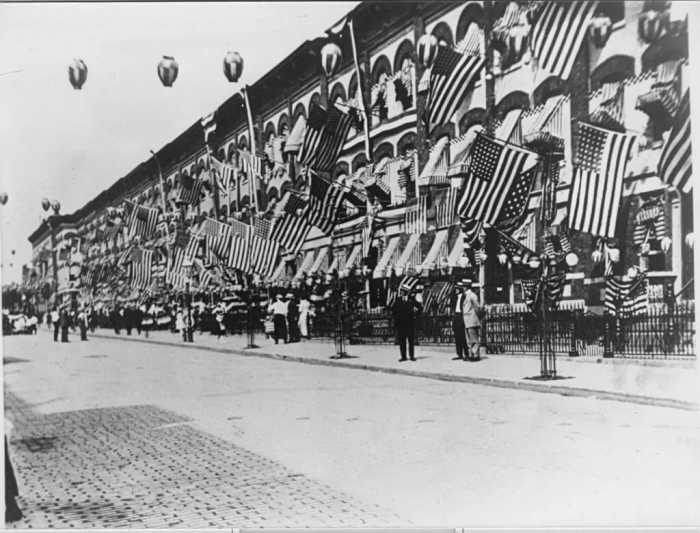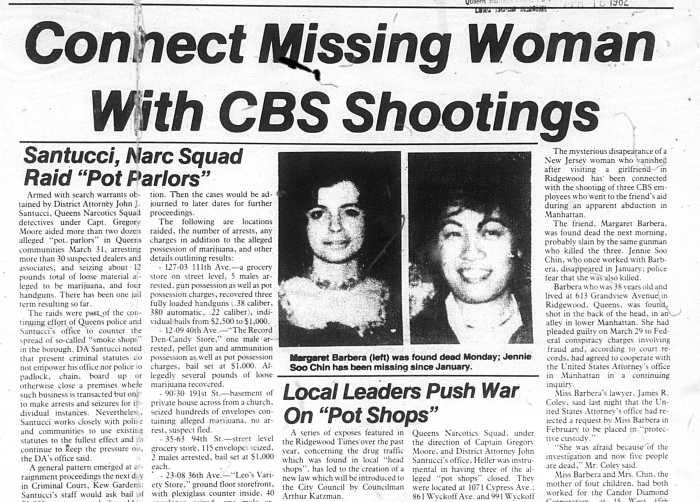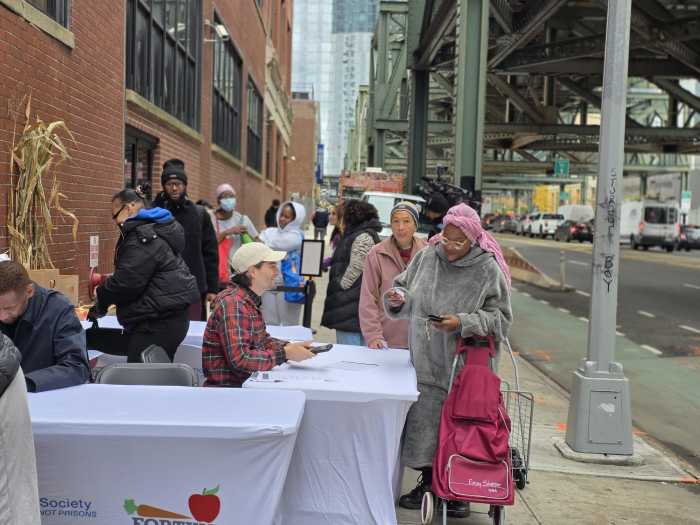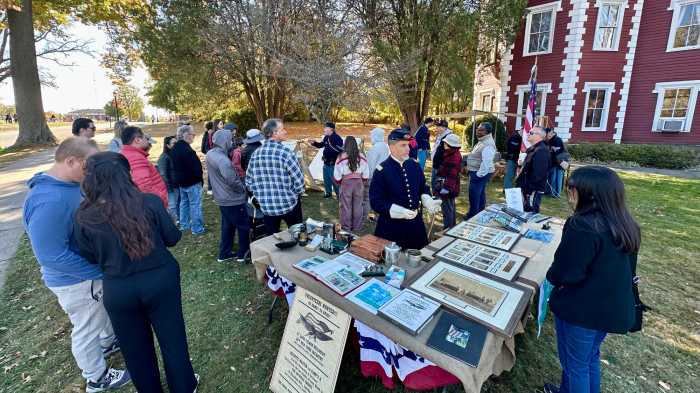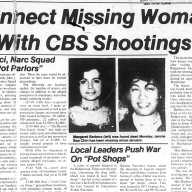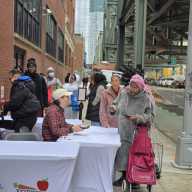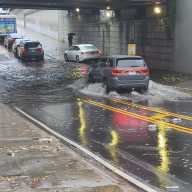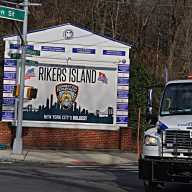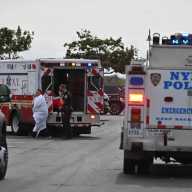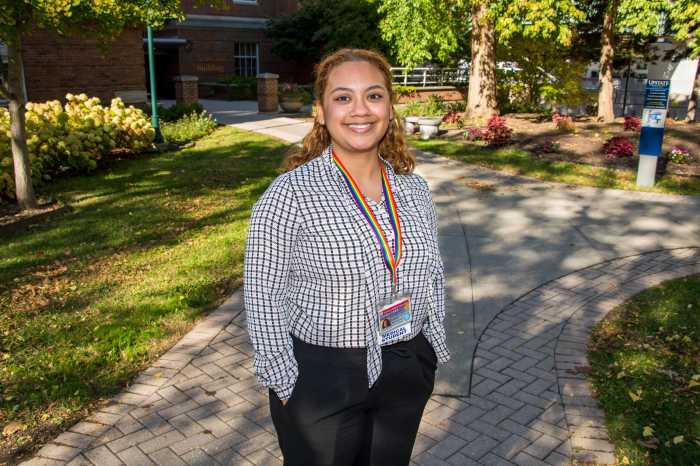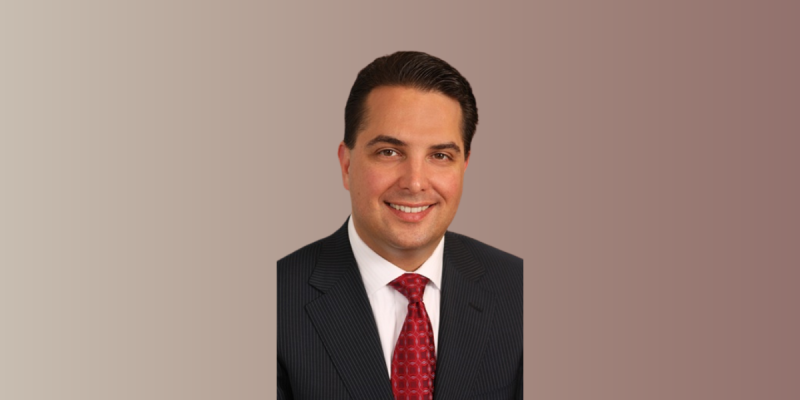By Steve Mosco
Hurricane Sandy left behind an ongoing health threat in the Rockaways that lingers long after the water receded.
A persistent and pervasive mold infestation creeps up the walls of gutted residences, as families douse the fungus with bleach in a futile attempt at eradication.
More than six months after the superstorm surged through the city and devastated parts of Queens, the Alliance for a Just Rebuilding, a group of more than 50 community, faith, labor and environmental organizations, released a report slamming the city for its handling of the mold cleanup. The report, which also included Staten Island, coincided with a tour of mold-ravaged homes in Rockaway Tuesday with homeowners and City Councilman Donovan Richards (D-Laurelton).
“Here we see the story of hundreds of people in the Rockaways,” said Richards from the front steps of the home belonging to residents Ivonne and Trevor Rankine, on Deerfield Road in Far Rockaway. “The city has to do more to ensure my constituents are not coming back with their children to mold-infested homes.”
The Rankines evacuated when Sandy hit the peninsula, returning days later to survey the damage. The scene they walked back into has been replayed numerous times by many residents throughout the borough and the city at large.
“We were horrified by what we saw,” Ivonne Rankine said. “The basement was flooded. We had no boiler, no heat, no stove. We tried to make the best of it, but we just could not stay here.”
The absence of heat and hot water, coupled with other inconveniences, drove the Rankines out of their home and into a hotel where they stayed until April 24. The temporary hotel housing set up by the city Department of Homeless Services is set to expire May 15, and they wanted to get a head-start on facing the mold spores.
According to the city Department of Health, mold can worsen asthma and trigger allergies and is a health risk for people with weakened immune systems.
“No one should be in a house with mold. I can’t believe DHS is making people leave the hotels,” Ivonne Rankine said. “And now we come home and find mold.”
The Rankines have tried to remove the mold themselves using bleach, but it keeps coming back.
After conducting a survey with nearly 700 storm-damaged households in the Rockaways and Staten Island, the Alliance’s report found more than 60 percent of homes were contaminated by mold and more than 90 percent of homeowners attempting to remove it themselves have seen the mold return.
Based on the report’s findings, community organizations are offering three recommendations to improve the city’s response to adequately address mold in storm-damaged homes.
Among the recommendations, they said the city should improve its public outreach and assess more proactively where mold infestation has gone unrecognized; set aside a portion of its Community Development Block Grant Disaster Recovery funds exclusively for mold remediation; and punish landlords for failing to properly remediate the problem.
“My family has struggled to find an affordable way to professionally remove the mold from our house on top of the other pressures of restoring our heat, dealing with a sinkhole beneath our house and continuing our moral obligation to serve the community,” Ivonne Rankine, who works as a minister in the community. “We are asking the city to do more to help the many other families like ours who are faced with mold infestations in their homes.”
Richards said one of the biggest issues in removing mold is communication. He said most homeowners do not even know about the city’s Neighborhood Revitalization NYC mold remediation program.
“The city needs to do a better job of getting the word out to residents,” he said. “People are spraying their walls with bleach thinking that will kill the mold. It won’t. The mold will keep coming back until it is treated properly.”
Reach reporter Steve Mosco by e-mail at smosco@cnglocal.com or by phone at 718-260-4546.





